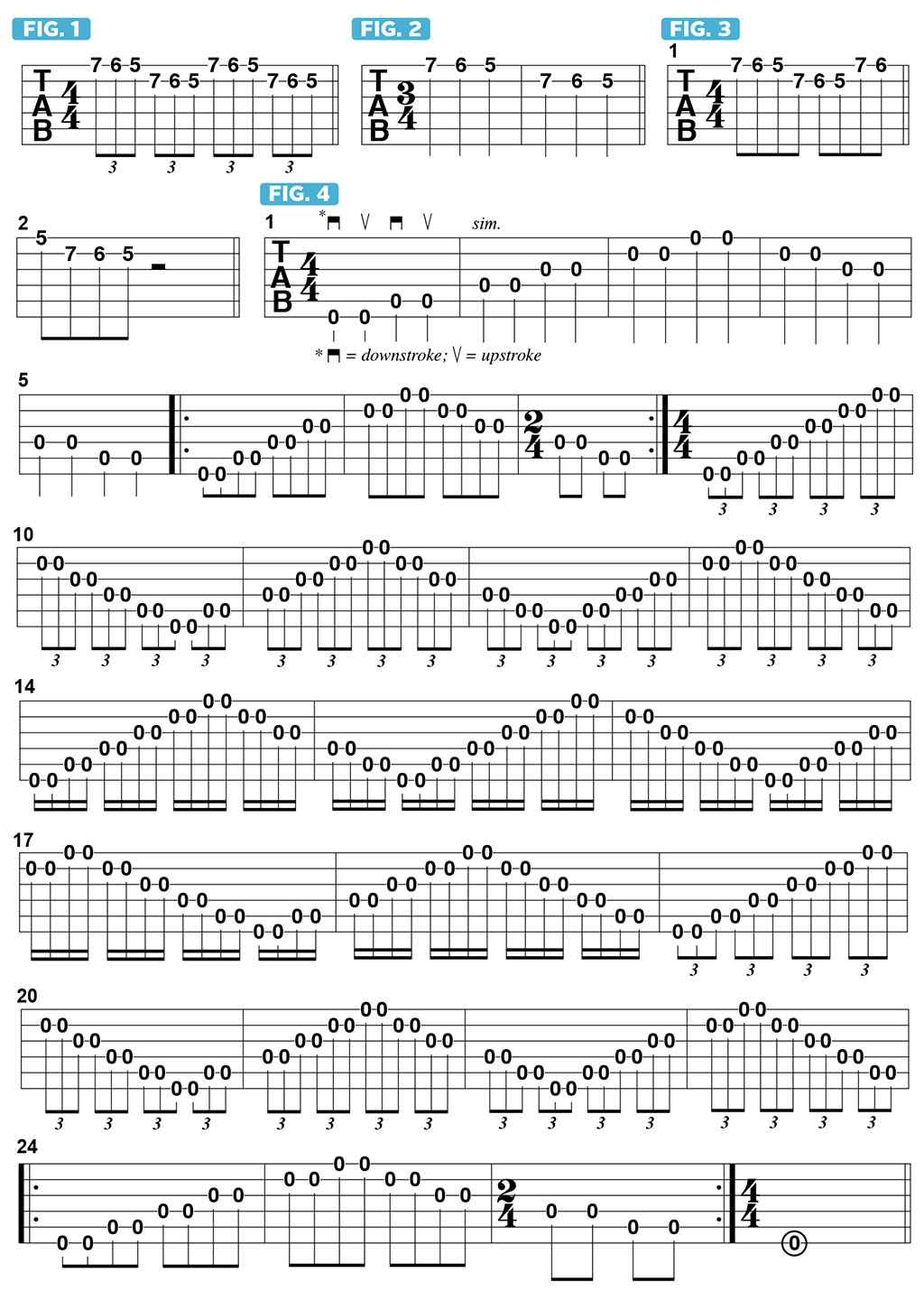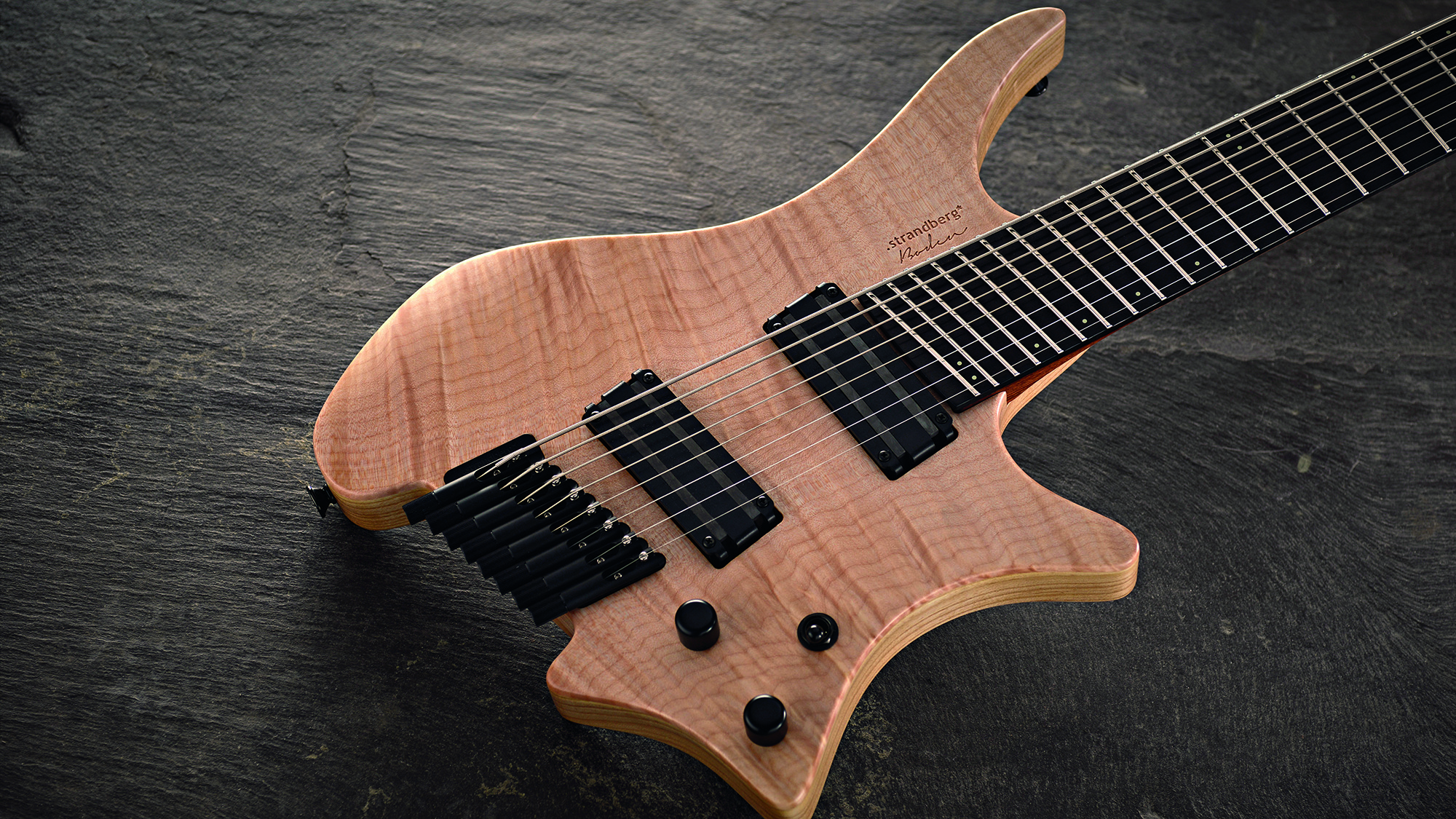Work on your picking hand accuracy with these 4 highly effective warm-ups
Learn these exercises from one of gypsy jazz pioneer Django Reinhardt's disciples, Stéphane Wrembel
In this lesson, I’d like to continue with the warm-up exercises I introduced in the previous lesson and offer two variations that have you moving across all six strings in a series of denser, accelerating rhythms. Last time, the exercises were built upon the approach of playing one note per string.
This time, we will switch to playing two notes per string, still sticking with open strings only, so that the exercise remains focused on the pick-hand. Next time, we will progress to the third variation, three notes per string.
As a point of introduction, the broader concept is stretching or compressing the rhythms sounded when playing two or three notes per string. As shown in FIGURE 1, I can play three notes per string as eighth-note triplets across the top two strings, descending chromatically on each string and then repeating the two-string pair.
Two variations are detailed in FIGURES 2 and 3: in FIGURE 2, each of these notes is played as a quarter note; in FIGURE 3, the complete six-note series is played as straight eighth notes in 4/4 meter. As you can see, it is easy to apply different rhythms to any specific note sequence.

Last time, one note was played per string as the exercise began with quarter notes and then rhythmically accelerated, or shifted gears to eighth notes, eighth-note triplets and then 16th notes.
This time, let’s expand the exercise by switching to two notes per string. Set your metronome to quarter note = 80, or 80 beats per minute. In bars 1-5 of FIGURE 4, all notes are played as quarter notes, with each string picked twice; it takes five bars to get back to the starting point. In bars 6-8, the sequence is played as eighth notes, and the three-bar pattern is played twice.
Bars 9-13 show the sequence played as eighth-note triplets. Notice that we now need to play the sequence across five bars to get back to two low E notes played on beat one. In bars 14-18, the rhythm is accelerated to 16th notes; once again, it will take five bars for the pattern to arrive back at the beginning and have the open low E note falling on the downbeat of beat one again.
All the latest guitar news, interviews, lessons, reviews, deals and more, direct to your inbox!
Starting at bar 19, we reverse back through each of the rhythm subdivisions, moving from eighth-note triplets to eighth notes and then finally back to quarter notes. As you play through this rather lengthy example, strive to remain as locked in with the metronome as possible, tapping your foot along with the clicks while switching from one subdivision to the next.
Another important element here is the manner by which the strings are picked: throughout all of these shifting rhythms, use an alternating (down-up) picking technique throughout. You will find that this type of intense focus on rhythmic solidity with the pick hand will pay off tremendously.
Stephane Wrembel is a world-renowned US-based French guitarist whose work has appeared in several soundtracks, including Woody Allen's Midnight in Paris. He hosts the annual Django A Gogo festival and releases a new Django Experiment album every January. Django Experiment IV is out now.
